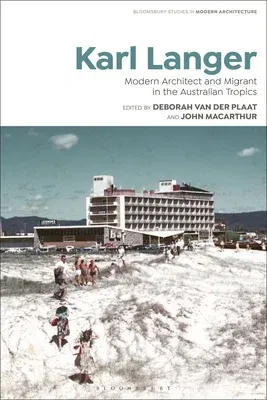Karl Langer: Modern Architect and Migrant in the Australian TropicsPaperback, 9 February 2023

Qty
1
Turbo
Ships in 2 - 3 days
Only 4 left
Free Delivery
Cash on Delivery
15 Days
Free Returns
Secure Checkout

Part of Series
Bloomsbury Studies in Modern Architecture
Print Length
328 pages
Language
English
Publisher
Bloomsbury Visual Arts
Date Published
9 Feb 2023
ISBN-10
1350280364
ISBN-13
9781350280366
Description
Product Details
Book Format:
Paperback
Country of Origin:
US
Date Published:
9 February 2023
Dimensions:
23.19 x
15.39 x
2.39 cm
ISBN-10:
1350280364
ISBN-13:
9781350280366
Language:
English
Location:
New York
Pages:
328
Publisher:
Weight:
975.22 gm